Genre: Racing Developer: Sega Enterprises Publisher: Sega Enterprises Players: 1 Released: 1992
A sports game endorsed by a champion was nothing new to the Genesis library back in 1992. By lending his name to Super Monaco GP II, Ayrton Senna joined a long list of names like Pat Riley, Mario Lemieux, Tommy Lasorda, and Arnold Palmer, to say nothing of the stable of EA personalities lead by John Madden. Senna doesn’t really fit into that group of other Sega endorsements, though. Where most of those celebrities lent their names to games that were already completed by the time they were in the picture (either by third party developers or simply being localized to the US), Senna’s situation is exceptionally rare in that his name was attached to the game right from the start, something that Sega of Japan didn’t do a whole lot of back in the day. Senna, however, was basically a god in the Land of the Rising Sun during the height of its love affair with Formula 1 racing, so his name on the box was actually a huge plus for the Japanese market.
In 1992 Ayrton Senna was a three-time defending F1 champion, and all three of his titles had come using Honda engines. He had a very close relationship with the manufacturer at the time (he had major input into the design of the Honda NSX). His first championship came with a win in the 1988 Japanese Grand Prix. And he and rival Alain Prost made the Japanese race the most dramatic on the calendar when they had title-deciding clashes at both the 1989 and 1990 Japanese Grands Prix. In 1991 Senna clinched his third championship in Japan by outlasting title rival Nigel Mansell.
But enough of the history lesson. Senna lent more than his name to Super Monaco GP II, offering advice on how to approach each of the authentic tracks in the game, recording voice overs that played during each race, and even contributing a track design. The point is, the man was involved. Much like Super Monaco GP before it, Monaco GP II features both a quick-race mode and a full season setting. In the quick mode you run a qualifying lap and then a race against a full field. The season mode, however, is where the real meat of the game lies. Monaco GP II comes with a “beginner” setting in season mode. Here, you race a single season for a single team against relatively slow competition. This is ostensibly for those of us who either can’t or won’t drive using a manual transmission in the game. The “master” setting, on the other hand, features a full season against extremely quick rivals and the ability to move up through the team rankings for the chance to challenge Ayrton Senna himself. This setting closely resembles the season mode found in the previous game. By challenging and beating drivers on better teams, you will take their rides. This is important, because only the top teams in the game feature cars that are fast enough to win. Unfortunately, in order to stand any chance of winning in this part of the game you need to come to grips with the manual transmission. Otherwise, you’ve really got no chance of standing on the podium when the checkered flag drops. Racing games from the 16-bit era featured rather simplistic handling models, and Super Monaco GP II is no exception.
While the game features tracks based on real-world circuits, the general rule of thumb to get through each and every corner is to stay on the inside and go as fast as you can while your car drifts toward the outside. This will safely get you through 90% of the curves in the game. The nuance lies in that other 10%. While driving a manual transmission, downshifting to slow your speed is the best way to take some of the tightest turns the game throws at you.
Monaco GP II also features a few other relatively rare features for 1992, including the ability to draft the competition (driving in their wake in order to gain a bit of speed) and wet weather racing (something that was seen to a lesser extent in the previous game). Ayrton Senna’s Super Monaco GP II honestly feels less like a sequel and more like an evolution of the original game. Sure, some of the tracks have changed and a few different game modes have been added, but for the most part it looks and feels precisely like its predecessor. That’s not such a bad thing. F1 games were in short supply on the Genesis during its early days, and the Super Monaco GP series stood head and shoulders above the rest at the time.
SCORE: 9 out of 10

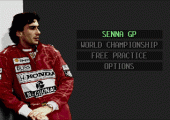
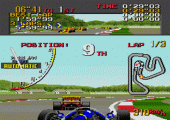
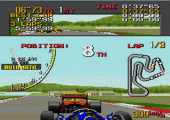
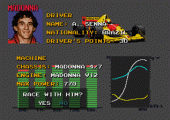
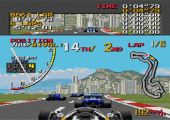
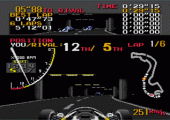
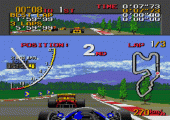
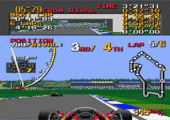
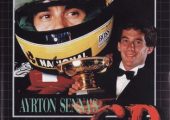
I have a bit of trivia to add about the voiceovers.
According to Stefano Arnhold, board chairman at Tectoy (Sega’s Brazilian representative), Senna forced a minor change of schedule by refusing to record the voiceover for the Spanish GP, which was to be held in the newly built Circuit de Catalunya. Senna’s reason: how could he give any honest advice about a track where he had never raced?
Thus, Sega had to wait until the Spanish GP actually happened. After the race – and I mean the very same day – Senna did the recording and sent them the tape.
Source: http://jogos.uol.com.br/infograficos/executivo-tectoy-conta-historias-curiosas-da-empresa-em-entrevista-ao-uol-jogos.jhtm
I love this game..Still one of the best games out there.
Its fun and its everything the article says.
This is still one of my favourite games of all time!
Just recently I discovered two different patches on romhacking (I’m not sure if it is ok to post links here) that applies the official F1 season into the game: driver names and photos, team names and car liveries, etc. If you like SMGPII and F1, it’s a must see!